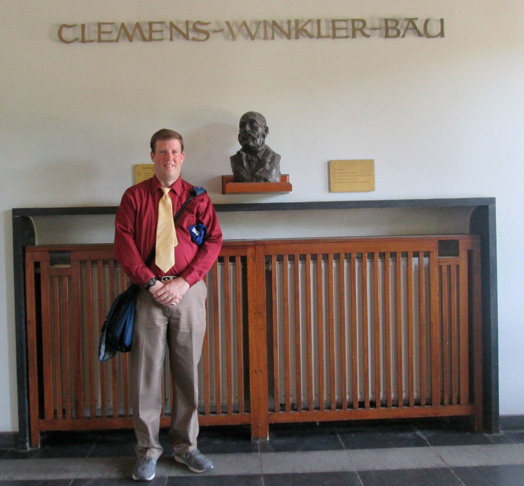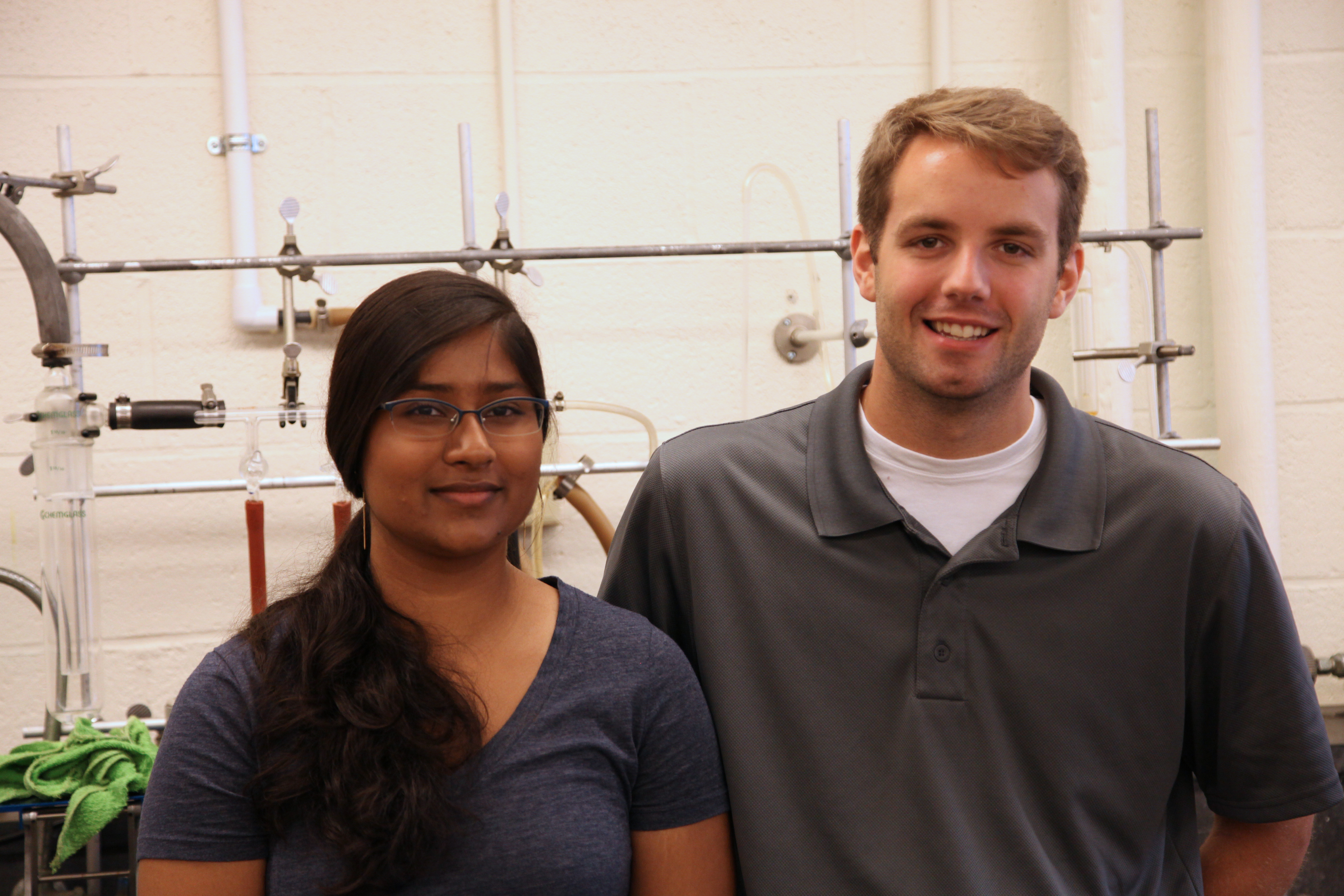Most smartphone or computer chip technology is synonymous with California’s Silicon Valley. The technology hub gets its name from the chemical element silicon, which is widely used in computer chip technology.
Dr. Scott Weinert, an associate professor of chemistry at Oklahoma State University, received a three-year $390,000 National Science Foundation (NSF) grant to research how the chemical element germanium could lead to more effective chip technology.
 “Germanium lies below silicon on the table of elements,” Weinert said. “By studying the structure of germanium and understanding its properties, we hope to synthesize oligogermanes that can surpass the semi-conductivity of related silicon-based materials.”
“Germanium lies below silicon on the table of elements,” Weinert said. “By studying the structure of germanium and understanding its properties, we hope to synthesize oligogermanes that can surpass the semi-conductivity of related silicon-based materials.”
(Oligomers are shorter, finite versions of a polymer molecular chain. Oligogermanes are another name for oligomers of germanium.)
Weinert’s research with germanium is widely known in the field of synthetic chemistry. His oligogermane lab at OSU collaborates with Dr. Frank Uhlig's lab at the University of Technology at Graz in Austria. Weinert's lab focuses on development of the oligogermanes, and Uhlig's lab focuses on their applicable purposes in technologies such as microchips and lithium batteries.
As part of a three-day European lecture tour last summer, Weinert spoke at the University of Technology at Graz and at the University of Pardubice in the Czech Republic. He was also invited to speak at the University of Freiburg in Germany, where Clemens Winkler discovered germanium in 1886.

The highly competitive grant from the NSF chemical synthesis division will open many doors for Weinert’s research and for his graduate students. This summer, one of Uhlig's research assistants came to OSU for three months as part of an exchange program to learn more about how Weinert and his team develop the oligogermanes. Weinert plans to send one of his graduate students to Austria soon.
Weinert is working with two graduate students this semester. Alex Shumaker is a second-year doctoral student in inorganic chemistry. Sangeetha is a third-year master's student who is also studying inorganic chemistry.

“Getting the grant is great because germanium is somewhat rare and can be costly,” Komanduri said. “Synthesizing oligomers using germanium as the backbone chain and altering its other properties will help with research and production costs.”
The NSF grant will also benefit an outreach program Weinert has developed for Native American high school and undergraduate students. The summer program has seen six students since it began in 2008. The students get hands-on experience in an academic lab setting, which Weinert hopes will spark their interest in pursuing a STEM degree. The first student who went through the program began an accelerated master's program with the OSU chemistry department this fall.
Weinert was previously awarded an NSF career grant (2009-2015). The current grant represents nine years of NSF-supported funding for his oligogermane research program.
